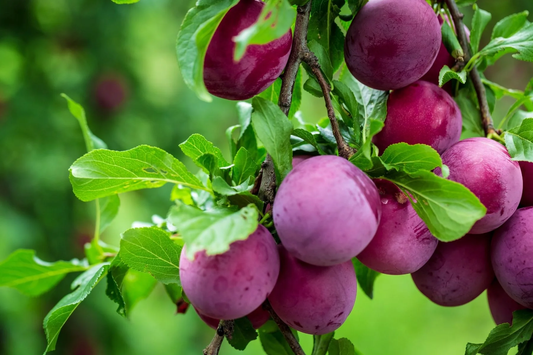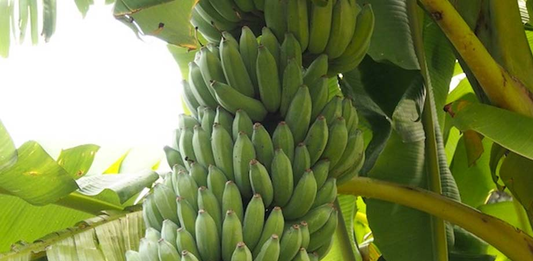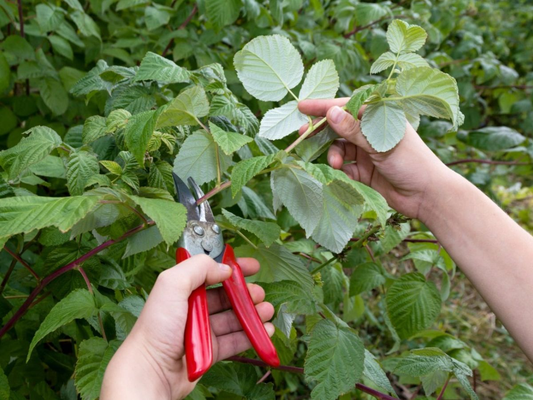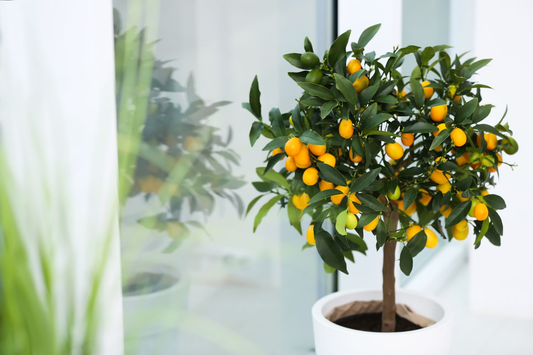Indoor Plant Care During Winter
Share
- 1. Introduction
- 2. Why Winter Care for Indoor Plants is Crucial
- 3. Assessing Light Levels in Winter
- 4. Optimal Temperature and Humidity for Indoor Plants
- 5. Watering Guidelines for Indoor Plants in Winter
- 6. Winter Fertilizing Practices for Indoor Plants
- 7. Dealing with Pests in Winter
- 8. Pruning and Cleaning Your Plants During Winter
- 9. Common Problems and Troubleshooting Indoor Plants in Winter
- 10. Winter Care for Specific Indoor Plants
- 11. Winterizing Indoor Plants for Long-Term Health
- 12. FAQ - Frequently Asked Questions
1. Introduction
Indoor plants add life and beauty to your home, but during the winter months, they face unique challenges that require special care. While these plants are relatively low-maintenance, winter conditions can stress them out. Understanding how to adjust their care routines is essential to ensuring that they thrive throughout the colder months.
Purpose of the Blog
- Highlight the importance of proper indoor plant care during the winter season.
- Provide readers with practical tips and techniques for overcoming common winter challenges that affect indoor plants.
- Offer advice on how to ensure plants stay healthy, vibrant, and continue to grow through the winter months.
Overview of Challenges
- Reduced Sunlight: Shorter days and lower sun angles mean your plants receive less natural light, potentially affecting their health.
- Lower Humidity: Indoor air often becomes dry during the winter due to heating systems, which can lead to dry, brittle leaves.
- Cold Drafts: Windows and doors can let in cold air, making it difficult to maintain the ideal temperature for your plants.
- Temperature Fluctuations: Sudden temperature changes, especially near windows or heating vents, can be stressful for plants.
Importance of Maintaining Indoor Plants
- Preserve Plant Health: Proper care ensures that your plants remain strong and healthy, ready to bounce back when spring arrives.
- Improve Indoor Air Quality: Plants help purify the air in your home, making it cleaner and fresher.
- Enhance Aesthetic Value: Well-maintained plants bring beauty, freshness, and a sense of calm to your indoor spaces, even in the colder months.
- Boost Your Mood: Research shows that indoor plants can reduce stress and improve overall well-being, providing a mental boost during the winter months.
By understanding and addressing these challenges, you can provide the right environment and care for your indoor plants, ensuring they thrive even in the harsh winter months. With a few adjustments to your regular care routine, your plants will continue to flourish despite the seasonal changes.

2. Why Winter Care for Indoor Plants is Crucial
Winter presents unique challenges for indoor plants, which can significantly affect their growth and overall health. Understanding the physiological impacts of the season helps plant owners take the necessary steps to ensure their plants stay healthy during the colder months.
Impact of Winter on Indoor Plants
- Low Light: With shorter days and weaker sunlight, indoor plants often receive insufficient light. This can lead to slow growth, yellowing leaves, or leggy stems as plants struggle to photosynthesize effectively.
- Cold Temperatures: Even if indoor temperatures are comfortable for humans, most plants thrive in warmer conditions. When the air cools down, plants may become stressed, leading to stunted growth or even root rot in extreme cases.
- Dry Air: Heating systems can dry out the air, which is particularly damaging for tropical plants that require higher humidity levels. Low humidity leads to dry, crispy leaf edges and can weaken the plant’s overall vitality.
Seasonal Growth Cycle
- During the winter months, many indoor plants enter a dormant or slower growth phase. This means they need less water, nutrients, and light.
- Reduced growth is a natural response to the lack of light and cooler temperatures. However, this doesn't mean plants should be neglected; they still require some care to maintain their health.
Difference Between Outdoor and Indoor Winter Care
- Outdoor Plants: Plants outside face harsher conditions such as freezing temperatures, snow, and frost. Many are exposed to extreme cold, and care usually focuses on protecting them from these conditions through mulching, covering, or moving them indoors.
- Indoor Plants: Indoor plants, on the other hand, don't face extreme cold or frost. However, they still suffer from reduced light and lower humidity, so their care revolves around providing adequate light, temperature regulation, and humidity control to help them survive winter's effects.
3. Assessing Light Levels in Winter
Winter brings reduced natural light, which is one of the most significant challenges for indoor plants. The shorter days and the lower angle of sunlight can have a substantial impact on plant health. Understanding how to assess and adjust light exposure in your home will help ensure your plants thrive despite these seasonal changes.
Reduced Natural Light
- Shorter Daylight Hours: As winter progresses, the days get shorter, and plants receive less exposure to natural sunlight. This can lead to slower growth and weakened plants if not addressed properly.
- Lower Sun Angle: During the winter months, the sun is lower in the sky, meaning its rays are not as intense and reach your plants at a different angle. This can make certain areas of your home less suitable for light-loving plants.
How to Assess Light Levels Indoors
- Use the "Hand Test": Hold your hand out where your plant is located and observe the shadow. If the shadow is very faint, the light is low. If it’s clearly defined, the light is moderate. A strong, crisp shadow indicates bright light.
- Consider Light Direction: Light from the south and west is typically stronger and more consistent in winter, while light from the north tends to be weaker and less direct.
- Observe Changes Over Time: As the days progress, note any shifts in light intensity in your home. Light conditions can vary, especially near windows and doors, so it's important to adjust your plants' locations accordingly.
Best Location for Your Plants
- Near Windows: Place plants near windows that receive the most light, particularly south- or west-facing windows. These windows will provide the most consistent and intense sunlight during winter.
- Use Grow Lights: If natural light is insufficient, consider supplementing with artificial grow lights. LED or fluorescent grow lights can provide the necessary spectrum of light to promote healthy growth.
Table: Light Needs of Common Indoor Plants
| Light Requirement | Example Plants |
|---|---|
| Low Light | Snake Plant, ZZ Plant, Pothos |
| Moderate Light | Spider Plant, Peace Lily, Dracaena |
| Bright Indirect Light | Fiddle Leaf Fig, Aloe Vera, Boston Fern |
By understanding how to assess light levels in your home and placing your plants accordingly, you can ensure they receive the right amount of light to thrive through the winter season.
4. Optimal Temperature and Humidity for Indoor Plants
Temperature and humidity are two critical factors that influence indoor plant health during winter. During the colder months, maintaining the right temperature and moisture levels in the air can be challenging but is essential for ensuring your plants remain healthy and vibrant.
Ideal Temperature Range
- Ideal Temperature: Most indoor plants thrive in a temperature range of 60°F to 75°F (15°C to 24°C). This temperature range mimics the mild conditions of their natural habitats and allows them to continue growing, albeit at a slower pace during the winter.
- Avoiding Extreme Cold: While plants tolerate mild cold, temperatures below 50°F (10°C) can cause stress and damage, especially to tropical plants. It's important to keep plants away from drafty windows or exterior doors that let in cold air.
Avoiding Temperature Fluctuations
- Drafts: Sudden temperature changes, like drafts from windows or doors, can shock plants, causing leaf drop, wilting, or yellowing. Always check for cold spots near windows or vents.
- Heating Vents: While central heating is great for keeping your home warm, it can create hot and dry spots near vents, which can stress plants. Place plants away from direct airflow to prevent them from drying out too quickly.
Maintaining Humidity
- Using Humidifiers: One of the best ways to raise humidity levels is to use a humidifier. This will maintain a stable moisture level in the air, particularly in rooms where the heat is running consistently.
- Trays of Water: Place shallow trays filled with water near your plants. As the water evaporates, it will increase the humidity in the immediate area around your plants.
- Misting: Lightly misting the leaves of your plants can help increase local humidity. However, be cautious not to overdo it, as excess moisture can encourage mold or mildew growth.
Table: Plants that Thrive in Low vs. High Humidity
| Humidity Requirement | Example Plants |
|---|---|
| Low Humidity Tolerant | Snake Plant, ZZ Plant, Aloe Vera |
| Moderate Humidity | Spider Plant, Peace Lily, Jade Plant |
| High Humidity Plants | Boston Fern, Calathea, Orchid |
By maintaining an optimal temperature range and increasing humidity levels where needed, you can help your indoor plants adjust to the winter conditions and keep them healthy throughout the season.

5. Watering Indoor Plants During Winter
Watering is one of the most important aspects of indoor plant care, especially during the winter months when plant growth slows down. The reduced light and cooler temperatures often mean that plants require less frequent watering. Understanding how to adjust your watering routine is crucial to maintaining healthy plants throughout the season.
How Watering Needs Change
- Slower Growth: During the winter, many indoor plants enter a dormant or slower growth phase, meaning they use water more slowly. This means they require less frequent watering compared to the warmer months when they’re actively growing.
- Reduced Evaporation: The lower humidity and cooler temperatures in the winter also reduce the rate at which water evaporates from the soil. As a result, the soil retains moisture longer, and you can extend the time between waterings.
Signs of Overwatering or Underwatering
- Overwatering: Look for yellowing leaves, soggy soil, and a musty smell, which may indicate root rot. Overwatering can stress the plant, leading to root suffocation and poor overall health.
- Underwatering: If the plant's leaves are wilting, turning brown at the edges, or dry and crispy, it could be a sign of underwatering. Plants that are underwatered may also have shriveled or dry soil.
Best Watering Techniques
- Room-Temperature Water: Always use water that’s at room temperature, as cold water can shock the plant’s roots, and hot water can damage them.
- Ensure Proper Drainage: Always ensure that pots have proper drainage holes to prevent water from pooling at the bottom. This allows excess water to escape, preventing root rot and other water-related issues.
- Water Thoroughly: Water the plant thoroughly until water drains out of the bottom of the pot, ensuring that the root system receives adequate moisture.
How to Test Soil Moisture
- Finger Test: Stick your finger about 1-2 inches into the soil. If it feels dry at this depth, it’s time to water. If it’s still moist, wait another few days before checking again.
- Soil Moisture Meter: For more precise readings, use a soil moisture meter to test the moisture level in the pot. This tool will help you determine when your plant actually needs water, preventing over or underwatering.
6. Winter Fertilizing Practices for Indoor Plants
During the winter months, indoor plants have different nutritional needs compared to the warmer seasons. Fertilizing practices must be adjusted to avoid overstimulating plants that are in a dormant or slower growth phase. Understanding how and when to fertilize your indoor plants during winter is essential to their health and vitality.
Reduced Need for Fertilizer
- Slower Growth: Most indoor plants slow down their growth during winter due to reduced light and cooler temperatures. As a result, they require less fertilizer because their nutrient uptake decreases.
- Risk of Fertilizer Burn: Over-fertilizing during the winter months can cause fertilizer burn, where excess nutrients accumulate in the soil and damage plant roots.
Types of Fertilizers
- Organic Fertilizers: Organic options, such as compost, worm castings, or fish emulsion, are slow-releasing and provide a more gradual, balanced nutrient supply. They are gentle on plants and less likely to cause over-fertilizing issues.
- Synthetic Fertilizers: Synthetic fertilizers are fast-acting and highly concentrated. While effective, they can lead to nutrient imbalances if overused. Choose a balanced, water-soluble fertilizer with a lower nitrogen content for winter use.
When and How to Fertilize
- Fertilizing Frequency: During winter, most indoor plants only need to be fertilized once a month or every six weeks. Over-fertilizing can result in nutrient imbalances and stress on the plant.
- Use Diluted Solutions: Always dilute the fertilizer to half-strength to prevent excess nutrients from accumulating in the soil. A weak solution will meet the plant's needs without overwhelming it.
- Timing: Fertilize plants when they are actively showing some growth. If your plant appears dormant or not growing, avoid fertilizing until spring when growth resumes.

7. Dealing with Pests in Winter
During the winter months, indoor plants can face new challenges, including pests. The warmth and humidity of indoor environments provide an ideal breeding ground for common pests like spider mites, aphids, and mealybugs. Understanding how winter affects pest behavior and learning how to prevent and treat infestations is key to keeping your plants healthy.
Common Indoor Pests in Winter
- Spider Mites: These tiny pests thrive in dry indoor environments and can cause significant damage by feeding on plant sap, leading to speckled leaves and a general decline in plant health.
- Aphids: Aphids can often be found on the undersides of leaves and stems. They feed on plant sap and can transmit diseases, causing yellowing and wilting leaves.
- Mealybugs: Mealybugs are covered in a white, powdery substance and tend to gather in clusters, particularly around leaf joints or stems. They also suck plant sap, weakening the plant and leading to stunted growth.
How Winter Affects Pest Behavior
- Warm Indoor Environments: As temperatures drop outdoors, pests often seek warmth inside. The consistent warmth and humidity of indoor environments allow them to thrive even during the cold months.
- Slow Pest Movement: Though pests tend to be less active in colder weather, the warm indoor air often speeds up their reproduction rates, meaning that infestations can spread more quickly indoors than outdoors.
Treatment and Prevention
- Inspect Regularly: Regularly check your plants for signs of pests, such as discolored or damaged leaves. Catching an infestation early makes treatment easier.
- Natural Remedies: Natural treatments like insecticidal soap, neem oil, and diatomaceous earth can help control pests without harming your plants or the environment.
- Chemical Treatments: For more severe infestations, you may consider using chemical insecticides, but ensure they are safe for indoor use and follow the instructions carefully.
Comparison of Natural Pest Control Methods
| Method | Description | Pros | Cons |
|---|---|---|---|
| Insecticidal Soap | A mild, plant-safe solution that targets soft-bodied insects. | Safe for most plants, effective on aphids and spider mites. | Needs frequent reapplication, can be ineffective on hard-bodied pests. |
| Neem Oil | A natural oil derived from the neem tree that works as an insecticide and fungicide. | Non-toxic, effective against a wide range of pests and fungal issues. | May have a strong odor, can cause leaf burn if applied in direct sunlight. |
| Diatomaceous Earth | Fine powder made from fossilized remains of marine organisms that dehydrate pests. | Non-toxic, safe for pets and children, effective against crawling insects. | Needs to stay dry to be effective, can create dust that irritates lungs. |
Dealing with pests during winter may seem like an added challenge, but by being vigilant and applying the appropriate treatments, you can protect your indoor plants from pest damage and maintain their health throughout the season.
8. Pruning and Cleaning Your Plants During Winter
Pruning and cleaning your indoor plants during the winter months is essential for maintaining their health and appearance. As plants enter their slower growth phase, it's the perfect time to remove dead or damaged parts and keep them clean. Regular care during this period helps plants focus on essential growth and ensures they stay vibrant throughout the season.
Importance of Pruning
- Remove Dead or Damaged Leaves: Pruning helps remove any dead, damaged, or diseased leaves or stems that could hinder your plant's health. These parts can attract pests or lead to fungal growth.
- Improve Plant Appearance: Pruning also helps shape your plants, giving them a more attractive and balanced appearance. It can promote better airflow and sunlight exposure to the remaining healthy parts of the plant.
- Encourage Healthy Growth: By cutting back excessive or unhealthy growth, plants can redirect energy towards producing stronger new growth once the warmer months arrive.
How to Clean Your Plants
- Wipe Down Leaves: Dust can accumulate on the leaves, blocking sunlight and reducing the plant's ability to photosynthesize. Gently wipe down the leaves with a soft cloth or sponge dampened with water or a mild soap solution to remove dust and debris.
- Inspect for Pests: Cleaning is also an opportunity to inspect your plants for signs of pests. Look for any insects, webs, or sticky residue that might indicate an infestation.
- Increase Light Absorption: By keeping your plants clean, you ensure that more light is absorbed through the leaves, promoting better photosynthesis during the limited daylight of winter.
Best Time to Prune During Winter
- Prune During Dormancy: The best time to prune is when the plant is in its dormant or slower growth phase, usually late winter. This minimizes stress on the plant and reduces the risk of cutting off healthy new growth.
- Avoid Pruning in Frosty Conditions: If your indoor plant is affected by temperature fluctuations or has been exposed to cold drafts, wait for a warmer period to prune, as cutting when stressed can be detrimental.
Pruning and cleaning your indoor plants during winter helps them conserve energy and thrive in a healthy state. By removing unwanted growth and debris, you create a cleaner environment for your plants to flourish as they prepare for the upcoming growing season.

9. Common Problems and Troubleshooting Indoor Plants in Winter
Winter brings unique challenges for indoor plants. With shorter days, lower humidity, and fluctuating temperatures, plants may exhibit signs of stress. Recognizing these symptoms early and knowing how to troubleshoot them can help you keep your plants healthy throughout the season. In this section, we’ll cover some common winter plant problems and how to address them.
Yellowing Leaves
-
Causes: Yellowing leaves can be caused by a variety of factors:
- Overwatering: Roots may become waterlogged, leading to root rot and yellowing leaves.
- Lack of Light: Inadequate sunlight during winter can cause leaves to lose their color.
- Low Humidity: Dry air during winter can stress plants and cause yellowing of the tips and edges of the leaves.
- Solution: Ensure proper watering practices, increase light exposure (or use grow lights), and raise humidity levels using a humidifier or water trays.
Drooping or Wilting Plants
-
Causes: Drooping or wilting can happen for several reasons:
- Drafts: Cold drafts from windows, doors, or vents can cause sudden temperature fluctuations that stress the plant.
- Underwatering: If you forget to water your plant, it may droop due to dehydration.
- Improper Lighting: Insufficient or uneven light can lead to drooping as the plant struggles to find sunlight.
- Solution: Keep plants away from cold drafts, water regularly, and ensure they receive adequate light.
Leaf Drop and Brown Tips
-
Causes: Several factors can cause leaves to drop or develop brown tips:
- Low Humidity: During winter, indoor air becomes dry, which can cause the edges of leaves to turn brown and eventually fall off.
- Root Rot: Overwatering or poor drainage can lead to root rot, which manifests as leaf drop.
- Temperature Stress: Exposure to extreme cold or heat can cause leaves to drop prematurely.
- Solution: Adjust humidity, avoid overwatering, and protect your plants from sudden temperature fluctuations.
How to Troubleshoot
- Step 1: Inspect your plant carefully for signs of pests, disease, or damage.
- Step 2: Check the environmental factors such as light, temperature, and humidity.
- Step 3: Test the soil moisture to ensure you’re not over or underwatering your plant.
- Step 4: Adjust care routines accordingly and make changes to the environment if necessary (e.g., moving to a sunnier spot, adjusting watering schedule).
Troubleshooting Common Winter Plant Problems
| Symptoms | Causes | Solutions |
|---|---|---|
| Yellowing Leaves | Overwatering, Lack of Light, Low Humidity | Adjust watering schedule, increase light exposure, increase humidity |
| Drooping/Wilting | Drafts, Underwatering, Improper Lighting | Move away from drafts, water regularly, adjust lighting |
| Leaf Drop/Brown Tips | Low Humidity, Root Rot, Temperature Stress | Increase humidity, check watering habits, protect from temperature extremes |
Troubleshooting indoor plant problems during the winter is an essential part of keeping your plants healthy and thriving. By being proactive and adjusting your care routine, you can help your plants overcome seasonal challenges and continue to grow beautifully indoors.
10. Winter Care for Specific Indoor Plants
Winter care can vary depending on the type of plant you’re looking after. Some plants are more resilient to the colder, drier conditions, while others require more attention. In this section, we’ll focus on how to care for specific types of indoor plants during winter, ensuring they stay healthy throughout the season.
Succulents and Cacti
- Watering: Succulents and cacti are drought-resistant plants that require less watering during winter. Overwatering is a common issue, so it’s important to let the soil dry out completely before watering again.
- Light: These plants need bright but indirect light. If natural light is limited during winter, consider using grow lights to provide the necessary light for healthy growth.
- Temperature: Succulents and cacti prefer cooler temperatures, typically between 50°F (10°C) and 60°F (16°C). Avoid placing them in drafty areas or near heating vents.
- Humidity: These plants are adapted to dry environments and generally do not require extra humidity during winter.
Tropical Plants
- Watering: Tropical plants, such as ferns, thrive in consistently moist soil. However, it’s important not to overwater during the winter months. Ensure that the top inch of soil is dry before watering again.
- Light: Tropical plants need bright, indirect light. Try to place them near windows with plenty of natural light, but out of direct sunlight, which can scorch their leaves.
- Temperature: Tropical plants prefer temperatures between 65°F (18°C) and 75°F (24°C). Keep them away from drafts and avoid placing them in areas with significant temperature fluctuations.
- Humidity: These plants need higher humidity, so consider using a humidifier, misting the plants, or placing them on a humidity tray to maintain moisture levels.
Flowering Houseplants
- Poinsettias: Poinsettias thrive in cool temperatures and should be kept in rooms that are around 60°F to 70°F (15°C to 21°C). Keep them in bright, indirect light and avoid placing them near cold drafts.
- Cyclamen: Cyclamen require cooler temperatures and prefer a spot with indirect light. Water them sparingly, allowing the soil to dry out between waterings.
- Begonias: Begonias need moderate temperatures (65°F to 75°F or 18°C to 24°C) and should be kept in indirect light. Be cautious not to overwater, as this can lead to root rot.
Care Requirements for Popular Indoor Plants in Winter
| Plant | Light | Watering | Temperature | Humidity | Fertilizing |
|---|---|---|---|---|---|
| Succulents and Cacti | Bright, indirect light | Water only when soil is completely dry | 50°F to 60°F (10°C to 16°C) | Low humidity | Minimal fertilizing, every 4–6 weeks |
| Tropical Plants (Ferns, etc.) | Bright, indirect light | Water when the top inch of soil is dry | 65°F to 75°F (18°C to 24°C) | High humidity | Light fertilizing, once a month |
| Poinsettias | Bright, indirect light | Water when soil feels dry | 60°F to 70°F (15°C to 21°C) | Moderate humidity | Minimal, only if needed |
| Cyclamen | Bright, indirect light | Water sparingly, let soil dry between waterings | 50°F to 65°F (10°C to 18°C) | Moderate humidity | Light, once every 4–6 weeks |
| Begonias | Bright, indirect light | Water when soil feels dry to the touch | 65°F to 75°F (18°C to 24°C) | Moderate humidity | Light, every 4–6 weeks |
Each plant type has its own specific needs during winter. By tailoring care to suit the plant's requirements, you can ensure they remain healthy, vibrant, and ready for the next growing season.

11. Winterizing Indoor Plants for Long-Term Health
Winterizing your indoor plants is an essential part of ensuring they stay healthy through the colder months and are well-prepared for the next growing season. During winter, plants often go into a dormant or slower growth phase, requiring less care but still benefiting from a few adjustments. Here are some tips to help you prepare your indoor plants for the long haul.
Prepare Plants for the Long Haul
- Reduce watering: As most plants enter dormancy or slower growth, they require less water. Allow the soil to dry out more thoroughly between waterings to prevent root rot.
- Adjust placement: Move your plants away from direct heat sources like radiators, heating vents, and space heaters. Place them in a location with more stable temperatures and indirect light.
- Cut back on fertilizing: During winter, many plants don’t need as much nutrition. Cut back on fertilizing to once a month or stop completely, depending on the plant's needs.
How to Store Plants During Extended Winter
- Rare or sensitive plants: For plants that are more sensitive to winter conditions or rare indoor varieties, consider relocating them to a cooler, more controlled environment, such as a basement or unheated room that still offers some light.
- Storing plants: If needed, store plants in their pots in a cool, dry area away from freezing temperatures, ensuring they’re not exposed to drafts or direct sunlight.
- Use humidity trays: To maintain moisture levels for plants that require a higher humidity, set up humidity trays with pebbles and water beneath the plants to create a more humid microclimate.
12. FAQ - Frequently Asked Questions
1. How can I prevent my indoor plants from getting too cold during winter?
- Move plants away from drafts: Ensure plants are not placed near windows, doors, or air vents where cold drafts can stress them. Consider using thermal curtains to reduce heat loss from windows.
- Use space heaters: If necessary, place a small space heater in the room to maintain a more stable temperature. However, avoid placing it too close to the plants to prevent overheating.
- Check temperatures: Use a thermometer to regularly check the temperature in your plant’s location. Most indoor plants thrive in temperatures between 60°F and 75°F (15°C - 24°C).
2. Can I use regular water from the tap for my indoor plants?
- Tap water: Tap water may contain chemicals like chlorine and fluoride, which can harm certain plants over time. It's best to let tap water sit for 24 hours before using it to allow these chemicals to dissipate.
- Distilled or room-temperature water: Distilled water is ideal for plants, as it is free from chemicals. Room-temperature water is also recommended as cold water can shock the plant's roots.
3. Why are the tips of my plant leaves turning brown in winter?
- Low humidity: Winter air is drier, and low humidity can cause the tips of leaves to turn brown. To fix this, increase humidity by using a humidifier or placing plants on trays of water with pebbles.
- Overwatering: Overwatering can lead to root rot, which also causes browning of leaf tips. Ensure the soil dries out slightly before watering again.
4. How can I tell if my plant is getting enough light during the winter?
- Signs of inadequate light: If your plant has elongated or weak stems, smaller leaves, or slowed growth, it may not be receiving enough light.
- Supplement with grow lights: If natural light is insufficient, use grow lights to provide the right spectrum of light. Place plants near the grow lights for 10-12 hours a day to ensure they receive enough light.
5. Do I need to water my plants more or less during winter?
- Less watering: Plants generally require less water in winter because their growth slows down and evaporation rates are lower. Always check the soil moisture before watering and reduce watering frequency to prevent root rot.




